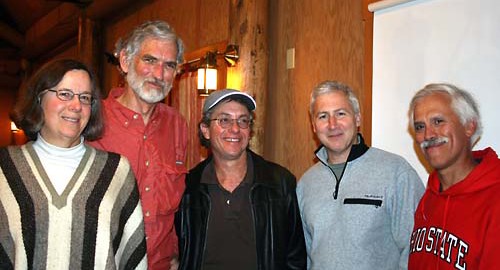Was your bachelor’s degree also in chemistry?
You know, it was actually physical science with an emphasis in physics and a minor in biology from San Jose State University. Another little twist was that San Jose State College had three names while I was there. It became California State University, San Jose, when I graduated and then a year later they shortened it to San Jose State University. I graduated in the one year that it had this unusual name, which is what is on my diploma.
Did you have any NPS contacts at that time? I was thinking about Carl Sharsmith who taught there.
I missed taking a class from him by one year. He retired teaching plant taxonomy and I had a guy named Dr. Savage. It was his first year doing plant taxonomy so it was kind of ragged. I ran across Carl Sharsmith giving an evening program at Yosemite and saw him at San Jose State in the hallway. I knew he was a wonderful person. I didn’t realize what a historical figure he was. I didn’t even talk to him about the Park Service or anything like that, I guess we could have. I also made friends with Dave Hartesveldt, whose dad did a lot of work with the giant sequoia and fire ecology. I was surrounded by Park Service people and didn’t realize it. I really enjoyed my job with the Park Service, doing the boat tours, leading walks, and giving talks. Probably the duty I enjoyed most was in Mazama Campground. Coming on duty later in the day, round noon, and preparing for the evening program. I did a circuit of the whole campground, walking it, inviting folks to the evening program. Then I set up the amphitheater, started the fire, and greeted folks. Of course, the evening programs led to a late night, getting home at eleven o’clock or so. Hank had arranged the schedule so that was your Monday and you could travel to the park that morning. He allowed us that travel time to start our day late. I appreciated it; that was really wonderful. For an interpreter the evening program was followed by three days of boats. In my tenure as an interpreter we were also doing living history.
Something we don’t do anymore.
That is pretty sad. It was such a wonderful thing, doing living history for the visitor. One day a week I was doing John Hillman, the discoverer of Crater Lake and at that time there were horses in the park. There’d be a patrol ranger on a horse in the parking lot of Rim Village. Also, I dressed up like a pioneer in his woolen clothes and talked to visitors about the discover of Crater Lake. In the campground, how many people could there be—maybe 200 or 300?


